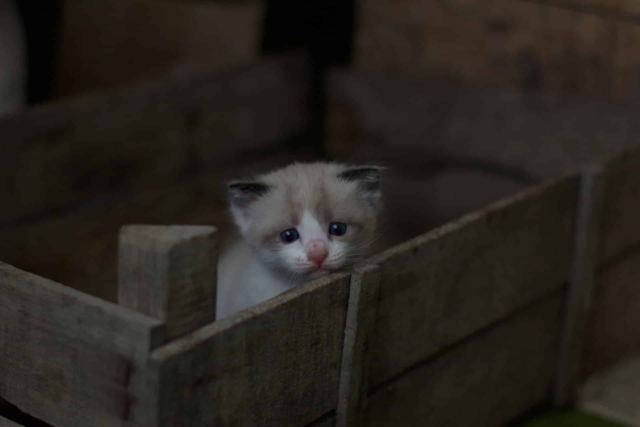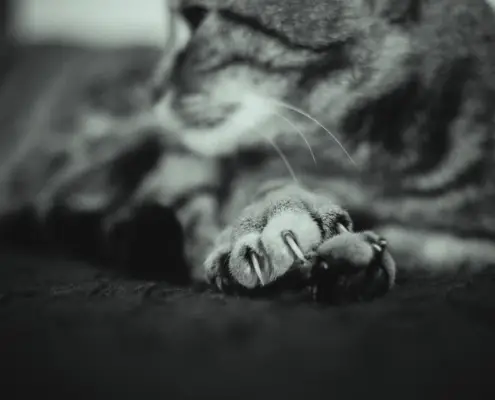
Loneliness is often associated with humans, but have you ever wondered if cats can experience this emotion as well? As independent and solitary animals, cats may seem unaffected by loneliness. However, research suggests that feline loneliness is a real and significant issue. In this article, we will delve into the secret world of feline loneliness and explore whether cats can truly experience this emotion.
Understanding cat behavior and socialization
To understand feline loneliness, it is crucial to comprehend cat behavior and socialization patterns. Cats are known for their independent nature, but they are not entirely solitary creatures. In the wild, cats are solitary hunters, but they still engage in social interactions with other cats. Domesticated cats have retained this need for socialization, although it may not be as pronounced as in their wild counterparts.
Cats establish territories and engage in scent marking to communicate with other cats. They also engage in social grooming, play, and mutual activities. Cats form social bonds with their human owners and other animals in the household. These social interactions are essential for their mental and emotional well-being.
Signs of loneliness in cats
While cats may not express their emotions in the same way as humans, there are signs that can indicate feline loneliness. Some common signs of loneliness in cats include:
- Excessive meowing or vocalization: Lonely cats may meow more frequently, seeking attention and human interaction.
- Increased clinginess or neediness: Cats that are lonely may become excessively clingy, seeking constant physical contact with their owners.
- Destructive behavior: Boredom and loneliness can lead to destructive behavior, such as scratching furniture or excessive grooming.
- Changes in eating habits: Lonely cats may experience changes in their appetite, either eating more or less than usual.
- Lethargy and decreased activity: Cats that are lonely may become less active and show a lack of interest in their surroundings.
Factors that contribute to feline loneliness
Several factors can contribute to feline loneliness. Understanding these factors can help cat owners identify and address the underlying causes:
- Lack of socialization: Cats that have not been properly socialized during their early development stages may struggle with loneliness and have difficulty forming bonds with humans and other animals.
- Absence of companionship: Cats that are the only pet in the household or spend extended periods alone can experience feelings of loneliness and boredom.
- Changes in the household: Major life changes such as moving to a new home, the arrival of a new baby, or the loss of a human or animal companion can trigger loneliness in cats.
- Environmental factors: A lack of environmental enrichment, such as toys, scratching posts, and interactive playtime, can contribute to feline loneliness.
Can cats be left alone?
Cats are generally more independent than dogs and can tolerate being left alone for extended periods. However, this does not mean that cats can thrive in complete isolation. Leaving a cat alone for long periods without any social interaction or mental stimulation can lead to loneliness and associated behavioral issues.
As a responsible cat owner, it is important to provide opportunities for socialization and mental stimulation even when you are not home. This can be achieved through the use of puzzle toys, interactive feeders, and leaving a radio or television on for auditory stimulation. Additionally, consider providing your cat with a window perch or a cat tree to observe the outside world and engage in natural behaviors.
Strategies to prevent and alleviate feline loneliness
Preventing and alleviating feline loneliness requires proactive measures from cat owners. Here are some strategies to help keep your feline companion content and fulfilled:
- Regular interactive play sessions: Engaging your cat in daily play sessions using toys that mimic prey can help fulfill their hunting instincts and provide mental stimulation.
- Environmental enrichment: Create a stimulating environment by providing scratching posts, climbing trees, hiding spots, and window perches. Rotating toys and introducing new ones can also prevent boredom.
- Social interaction: Spend quality time with your cat, engaging in activities they enjoy, such as grooming, petting, or interactive play. This will strengthen the bond between you and alleviate loneliness.
- Consider a companion: If your cat shows signs of chronic loneliness, consider introducing another compatible cat into the household. Proper introductions and gradual acclimation are key to a successful feline companionship.
Bonding activities for cats and their owners
Bonding activities play a crucial role in preventing and reducing feline loneliness. Here are some activities that can strengthen the bond between cats and their owners:
- Grooming sessions: Regular grooming sessions not only help maintain your cat’s coat but also provide an opportunity for close physical contact and bonding.
- Interactive playtime: Engage your cat in interactive play sessions using toys such as feather wands or laser pointers. This will stimulate their natural hunting instincts and provide mental and physical exercise.
- Training sessions: Cats can be trained using positive reinforcement techniques. Teaching your cat simple tricks or commands not only provides mental stimulation but also strengthens the bond between you and your feline companion.
Introducing a new cat to combat loneliness
If your cat is chronically lonely, introducing a new cat to the household can help alleviate their loneliness. However, proper introductions are crucial to ensure a harmonious relationship between the cats. Here are some steps to follow when introducing a new cat:
- Gradual introductions: Start by keeping the new cat in a separate room and gradually allow them to explore the rest of the house while supervised. This allows the cats to become familiar with each other’s scents without direct interaction.
- Scent swapping: Exchange bedding or toys between the cats to help them become accustomed to each other’s scent.
- Controlled face-to-face meetings: Once the cats are comfortable with each other’s scents, gradually introduce them face-to-face while providing plenty of positive reinforcement and treats.
- Supervised interactions: Initially, supervise all interactions between the cats to ensure they are getting along. Gradually increase the duration and frequency of their interactions as they become more comfortable with each other.
Seeking professional help for lonely cats
If your cat continues to exhibit signs of loneliness despite your efforts, it may be beneficial to seek professional help. A veterinarian or animal behaviorist can assess your cat’s specific needs and provide tailored advice and strategies to address their loneliness. They may recommend behavior modification techniques or even prescribe medication if necessary.
Conclusion
While cats may be known for their independent nature, they are not immune to loneliness. Understanding the signs, causes, and strategies to prevent and alleviate feline loneliness is essential for the well-being of our feline companions. By providing social interaction, environmental enrichment, and considering the introduction of a compatible companion, we can ensure that our cats lead fulfilling and content lives. Remember, a little effort can go a long way in combating feline loneliness and strengthening the bond between you and your furry friend.
If you enjoyed my article, I would appreciate you sharing it with your network.

Sima Ndlebe
Sima writes for CatBuzz. He is interested in Cats, Health and Fitness, and Entrepreneurship.
Published: 13 October 2023




